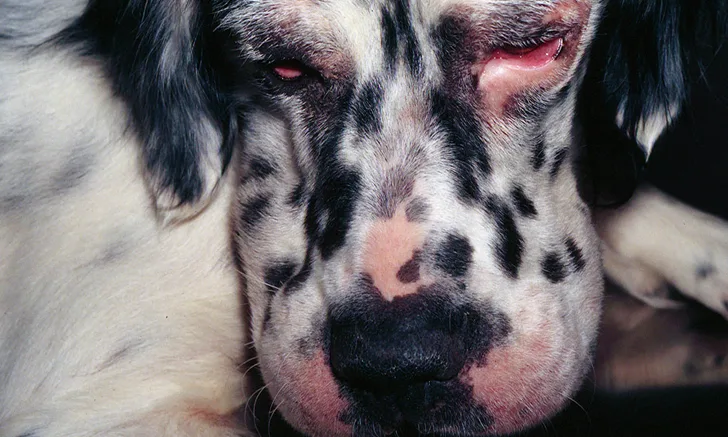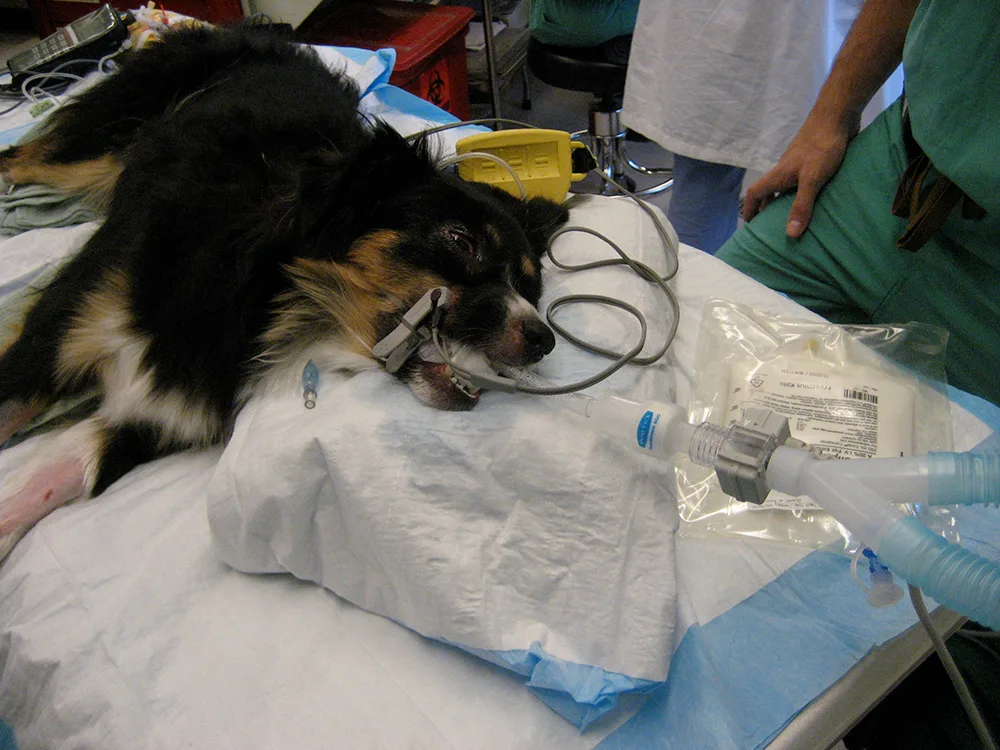Image Gallery: Adverse Drug Reactions
Julien Guillaumin, DVM, DACVECC, DECVECC, The Ohio State University

Drug reactions are common in veterinary medicine. They vary from clinically visible cutaneous reactions with rapid onset to subtle, often delayed reactions that are more difficult to diagnose.
Drug reactions can be divided into immunologic and nonimmunologic reactions. Immunologic reactions are subdivided into Type I (ie, IgE-mediated), Type II (ie, cytotoxic), Type III (ie, immune complex deposition), and Type IV (ie, delayed-type and cell-mediated) hypersensitivity responses. Nonimmunologic reactions include both predictable reactions and less predictable reactions. Predictable reactions include cases of drug toxicity or interactions, while less predictable reactions include idiosyncratic reactions. Diagnosis and treatment depend on reaction type.

FIGURE 1
Annie, a 3-year-old spayed female Australian shepherd dog, is intubated and mechanically ventilated after suffering from ventilator failure as a result of ivermectin toxicity. She received intralipid therapy as part of her treatment.
Annie was treated with ivermectin (subcutaneously, once, dose unknown) for suspected ear mites. Within 3 hours after treatment, her consciousness progressively decreased and she exhibited difficulty breathing. She was presented to an emergency veterinarian with severe hypoventilation that necessitated mechanical ventilation. Annie’s drug sensitivity reaction was suspected to be the result of a mutation in the multidrug resistance gene MDR1 (ABCB1∆) that led to accumulation of the drug in the brain and enhanced drug toxicity.1 Annie received intralipid therapy (1.5 ml/kg of the 20% intralipid solution IV bolus over 5 minutes, followed by 0.25 ml/kg/min for 1 hour) and mechanical ventilation and recovered after a few days without long-lasting effect.